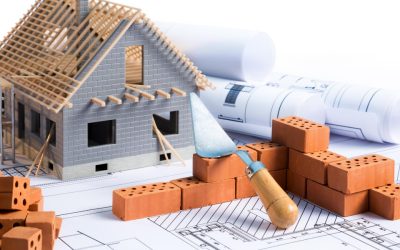Like a sturdy foundation supporting a house, the question of whether you can put a shed on a rental property requires careful consideration.
Before you embark on this journey, it is crucial to understand the importance of obtaining permission from your landlord.
Putting a shed on a rental property would typically require permission from the landlord or property owner. It’s important to check the terms of your lease agreement to see if you are allowed to add structures like sheds to the property.
However, the answer to this question goes beyond just seeking approval. There are laws to navigate, lease agreements to scrutinize, and various factors to consider when installing a shed.
In this discussion, we will explore these aspects and even provide alternative storage options.
So, sit tight and let’s shed some light on this topic together.
Key Takeaways
- Obtain landlord permission before installing a shed on a rental property.
- Thoroughly read and understand the lease agreement terms regarding alterations and maintenance.
- Familiarize yourself with local zoning laws and regulations to ensure compliance.
- Consider alternative storage solutions to shed installation, such as renting a storage unit or utilizing existing spaces.
Landlord Permission: Understanding the Importance
Understanding the importance of obtaining landlord permission is crucial when considering alterations or additions to a rental property, such as installing a shed. Requesting consent from your landlord isn’t only a matter of courtesy, but it also has legal implications.
Your lease agreement may contain specific rules and requirements regarding alterations to the property, including the installation of structures like sheds. It’s essential to thoroughly read and understand these terms to ensure compliance.
Open communication with your landlord is key during this process. Clearly explain the purpose and placement of the shed, addressing any concerns they may have. By seeking their permission, you demonstrate respect for their property and foster a positive landlord-tenant relationship.
Additionally, understanding the legal implications is vital. The lease may define fixtures and outline any restrictions on adding or removing structures. Consulting with your landlord and seeking legal advice can help navigate any potential issues and ensure a smooth process.
Local Planning Regulations: Understanding Your Area’s Guidelines
Before erecting a shed on your rental property, it’s essential to acquaint yourself with the local planning regulations and guidelines in your area. These regulations determine what can and cannot be done concerning structures on your property, and failure to adhere to them can lead to fines or legal consequences.
Here are three key considerations regarding local planning regulations:
Planning permissions: In many regions, you will need to obtain planning permission before adding a shed to your rental property. This permission ensures that the structure meets safety and construction standards established by the local council. Failing to secure planning permission can result in penalties and may necessitate the removal of the shed altogether.
Size limitations: Planning regulations often impose specific restrictions on the size of structures permitted on rental properties. These limitations are implemented to preserve the visual appeal and functionality of the area. It’s essential to verify the maximum size permitted for sheds in your area before proceeding with any plans.
Engagement with local authorities: To ensure compliance with all relevant regulations, it’s advisable to engage with local planning officials or professionals. They can offer guidance on the particular requirements and restrictions in your area, as well as assist you in navigating the planning permission application process.
Lease Agreement: Checking the Terms and Conditions
To ensure that you’re in compliance with your lease agreement, it’s essential to carefully review the terms and conditions before proceeding with any alterations to the rental property. The lease agreement outlines specific rules and regulations that both tenants and landlords must adhere to.
As a tenant, it’s your responsibility to understand your obligations and responsibilities. This includes seeking permission from your landlord before making any changes to the property, such as adding a shed. Many lease agreements have restrictions on building or additions, so it’s crucial to check the terms before proceeding.
Additionally, landlords have certain obligations towards their tenants. They should provide notice before entering the property and maintain open communication to address any concerns or conflicts that may arise. Rent payments should be made on time as outlined in the lease agreement, and tenants should be aware that the security deposit may not cover normal wear and tear.
Lastly, tenants should be considerate of their neighbours and the community, while landlords should address any issues between tenants and neighbours. By understanding and fulfilling your responsibilities as a tenant, you can ensure a harmonious living arrangement with your landlord and fellow residents.
Shed Installation: Factors to Consider
When installing a shed on a rental property, it’s important to consider several factors to ensure compliance with your lease agreement and a smooth process. Here are three key factors to keep in mind:
- Seek permission: Before proceeding with shed installation, make sure to seek approval from your landlord. This will avoid any potential conflicts and ensure that you’re adhering to the terms of your lease agreement.
- Purpose of the shed: Clearly communicate the intended use of the shed to your landlord. For example, if you plan to use it for storing tools for property maintenance, it’s important to convey this information. This will help your landlord understand the need for the shed and may increase the likelihood of obtaining permission.
- Tenant responsibilities: Inquire about your responsibilities as a tenant regarding shed maintenance and repairs. It’s important to understand who’s responsible for these tasks and whether you have the authority to perform necessary repairs or landscaping work around the shed.
Considering these factors won’t only help you stay in compliance with your lease agreement, but also ensure a smooth process for shed installation on your rental property.
Potential Alternatives: Exploring Other Storage Options
Now let’s explore other storage options to consider when a shed installation may not be possible or preferred for your rental property.
Renting a storage unit from a nearby facility can provide secure and convenient storage space for tools and equipment. This option allows you to keep your belongings off-site while still having easy access to them whenever needed.
Another alternative is to utilize existing storage spaces within the rental property, such as basements, attics, or designated closets. By making use of these areas, you can maximize the available space without the need for a shed.
Additionally, investigating the possibility of using portable storage solutions, like outdoor storage cabinets or deck boxes, can offer flexibility without the need for permanent structures. These options allow you to easily move and reposition your storage as needed.
Thinking outside the box, you could also consider sharing equipment with neighbors or friends. Collaborating on a shared storage space can be a cost-effective alternative to installing a shed on the rental property.
Lastly, exploring innovative storage solutions, such as wall-mounted tool racks or vertical storage systems, can maximize space efficiency within the rental property. By utilizing these creative options, you can find practical storage solutions that meet your needs while enhancing the overall functionality of your rental property.
Frequently Asked Questions
Does a Shed Increase Rental Value?
Having a shed on your rental property can increase its value and provide several benefits. It attracts long-term renters who appreciate the extra storage space. Consider safety and aesthetics when deciding whether to keep or remove the shed.
How Big Can a Shed Be Without Planning Permission?
Without planning permission, shed size limits vary by location. In the UK, it’s often limited to 10 square meters. Regulations state that sheds should not exceed 2.5 meters in height and must not be used as living accommodation.
Is Landlord Responsible for Shed?
The shed’s maintenance is typically the landlord’s responsibility. However, whether a tenant can build a shed on a rental property depends on the landlord’s permission and the terms of the lease agreement.
Do I Need Planning Permission to Run a Business From My Shed?
Yes, you may need planning permission to run a business from your shed or convert it into an office space. It’s important to check local regulations and consult with the local planning department for guidance.
Final Thoughts
When considering putting a shed on a rental property, it’s crucial to obtain permission from the landlord and understand any local regulations or homeowner association rules.
Checking the lease agreement for any specific terms and conditions is also important.
By communicating openly with the landlord and considering alternative storage options, both parties can find a mutually beneficial solution.
Remember to always be knowledgeable and respectful of the rights and responsibilities involved.
- How to Choose the Right Rental Property Management Company - May 2, 2024
- Tax-Deductible Home Improvements for Rental Property - May 1, 2024
- Buyers Guide: How To Negotiate House Price - May 1, 2024



